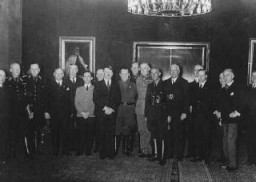You searched for: 融資交易程序後臺源碼【TG飞机:@bapingseo】Google雇佣广告有哪些【TG电报:@bapingseo】谷歌独立站如何优化【Telegram:@bapingseo】南方双彩app官方版下载喜运28官网久旺28登录英雄联盟外围在哪赌最老版欢乐斗地主?20220706Hs8up5.html
<< Previous | Displaying results 26-50 of 213 for "融資交易程序後臺源碼【TG飞机:@bapingseo】Google雇佣广告有哪些【TG电报:@bapingseo】谷歌独立站如何优化【Telegram:@bapingseo】南方双彩app官方版下载喜运28官网久旺28登录英雄联盟外围在哪赌最老版欢乐斗地主?20220706Hs8up5.html" | Next >>
-
Jewish DPs Aboard a Ship Traveling to Tricase
PhotoAustrian and German Jewish displaced persons (DPs)—who had survived the war in Albania—pose aboard a British ship taking them to the Tricase DP camp in Italy, September 28, 1945.
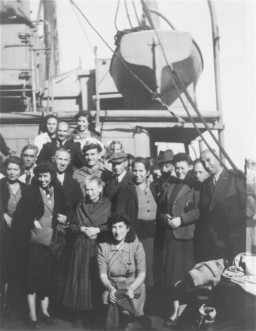
-
Theresienstadt: Key Dates
ArticleExplore key dates in the history of the Theresienstadt camp/ghetto, which served multiple purposes during its existence from 1941-45.
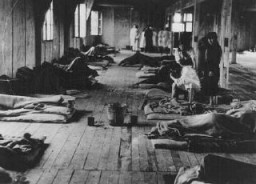
-
1944: Key Dates
ArticleExplore a timeline of key events during 1944 in the history of Nazi Germany, World War II, and the Holocaust.
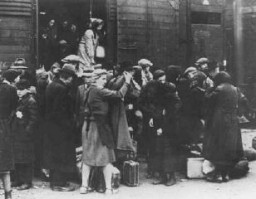
-
World War II Dates and Timeline
ArticleWorld War II was the largest and most destructive conflict in history. Learn about key WWII dates in this timeline of events, including when WW2 started and ended.

-
Reichstag Fire Decree
ArticleThe Reichstag Fire Decree of February 1933 restricted individual freedoms, and allowed Hitler's government to overrule state and local laws and overthrow state and local governments.

-

-
Benito Mussolini
ArticleBenito Mussolini’s Fascist takeover of Italy was an inspiration and example for Adolf Hitler and the Nazi Party in Germany. Learn more.
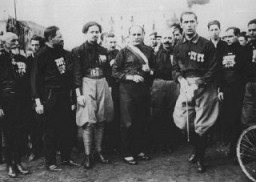
-
Mechelen - Maps
Media EssayIn the summer of 1942, the Germans made preparations to deport the Jews of Belgium. They converted military barracks in the city of Mechelen into a transit camp. Between August 4, 1942, and July 31, 1944, a total of 28 trains carrying 25,257 Jews left Mechelen for German-occupied Poland; most of them went to Auschwitz-Birkenau. This figure represented more than half of the Belgian Jews murdered during the Holocaust.
-
German forces enter Warsaw
FilmGermany invaded Poland on September 1, 1939, beginning World War II. German forces swiftly overran Polish border defenses and approached Warsaw, Poland's capital city. Warsaw suffered heavy air attacks and artillery bombardments during the campaign. The city surrendered on September 28. This footage shows German forces entering Warsaw amidst the destruction caused by their bombardment of the city.

-
Onlookers view the damaged Reichstag
PhotoOnlookers in front of the Reichstag (German parliament) building the day after it was damaged by fire. On this same day, the Nazis implemented the Decree of the Reich President for the Protection of the People and the State. It was one of a series of key decrees, legislative acts, and case law in the gradual process by which the Nazi leadership moved Germany from a democracy to a dictatorship. Berlin, Germany, February 28, 1933.
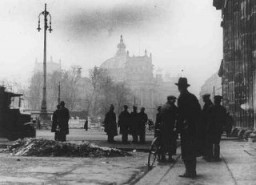
-
Aftermath of pogrom in Iasi
PhotoRoma (Gypsies) remove bodies from the Iasi-Calarasi death train during its stop in Tirgu-Frumos. Two trains left Iasi on June 30, 1941, bearing survivors of the pogrom that took place in Iasi on June 28-29. Hundreds of Jews died on the transports aboard crowded, unventilated freight cars in the heat of summer. Romania, July 1, 1941.
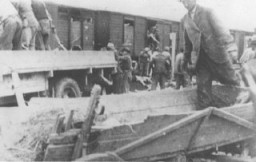
-
1945 portrait of Eta Wrobel
Photo1945 portrait of Eta Wrobel who was born on December 28, 1918, in Lokov, Poland. During the Holocaust, Eta helped organize an exclusively Jewish partisan unit of close to eighty people. She was the only child in her family of ten to survive.
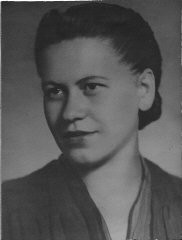
-
Photo taken a few weeks before World War II began
PhotoPhoto taken a few weeks before World War II began. Regina is at the right of the front row. Kunow, Poland, July 28, 1939.

-

-
Mechelen
ArticleThe Mechelen camp, halfway between Antwerp and Brussels, was a transit camp for the deportation of Jews from Belgium during the Holocaust.

-
Kamenets-Podolsk
ArticleIn August 1941, Kamenets-Podolsk became the site of a mass killing of Jews. This was one of the first large-scale mass murders of the Final Solution.

-
Refugee camp in Zbaszyn
PhotoView of Zbaszyn, the site of a refugee camp for Jews of Polish nationality who were expelled from Germany. The Jewish refugees, hungry and cold, were stranded on the border, denied admission into Poland after their expulsion from Germany. Photograph taken between October 28, 1938, and August 1939. Warsaw-based historian, political activist, and social welfare worker Emanuel Ringelblum spent five weeks in Zbaszyn, organizing assistance for the refugees trapped on the border.
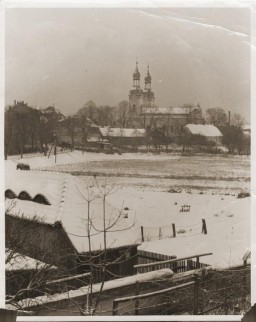
-
View of the refugee camp in Zbaszyn
PhotoView of the flour mill in Zbaszyn, which served as a refugee camp for Jews expelled from Germany. The Jewish refugees, hungry and cold, were stranded on the border, denied admission into Poland after their explusion from Germany. Photograph taken between October 28, 1938, and August 1939. Warsaw-based historian, political activist, and social welfare worker Emanuel Ringelblum spent five weeks in Zbaszyn, organizing assistance for the refugees trapped on the border.

-
Destruction of the Lodz Ghetto
Timeline EventBeginning on August 9, SS and police units liquidate the Lodz ghetto.
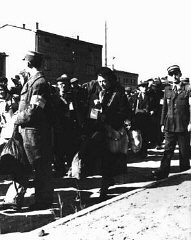
-
Germany invades Poland
FilmGermany invaded Poland on September 1, 1939, beginning World War II. Quickly overrunning Polish border defenses, German forces advanced towards Warsaw, the Polish capital city. This footage from German newsreels shows German forces in action during the invasion of Poland. Warsaw surrendered on September 28, 1939.
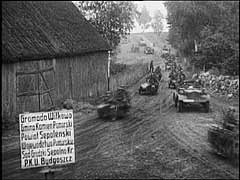
-
Radiogram from Moritz Schoenberger on the "St. Louis"
DocumentOn May 25, 1939, artist Moritz Schoenberger sent this radiogram (a telegram sent by radio) from the ocean liner "St. Louis" during the voyage from Hamburg, Germany, to Havana, Cuba. On this voyage, the "St. Louis" carried over 900 Jewish refugees fleeing Nazi persecution. The telegram reads, in part, "Physically and spiritually recovered and invigorated most confident about reaching Havana Saturday. Money received. Many thanks. Kisses. Papa." Schoenberger's optimism proved unfounded. Cuban authorities…
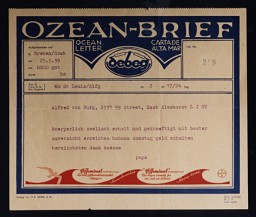
-
Fall of Warsaw
FilmGerman troops reached parts of Warsaw on September 8 and 9, 1939. During the German siege of Warsaw, the city sustained heavy damage from air attacks and artillery shelling. Warsaw surrendered on September 28. Here, German troops occupy Warsaw. This footage comes from "Tale of a City," a film made by a Polish underground film unit.
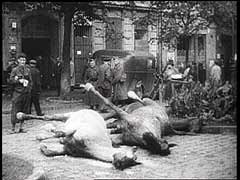
-
Funeral for SS officers
PhotoSS officer Karl Höcker salutes in front of an array of wreaths during a military funeral near Auschwitz. The original caption for the photograph reads "Beisetzung von SS Kameraden nach einem Terrorangriff." (Burying our SS comrades from a terror attack.) Pictured in the background are Josef Kramer and Karl Moeckel.This image shows the aftermath of the September 13, 1944, bombing of IG Farben in which 15 SS men died in the SS residential blocks and 28 were seriously wounded.

-
The Destruction of the German Garrison in Lenin
ArticleAfter the German occupation of Lenin, there was a garrison established. Learn about the partisan attack and subsequent destruction.
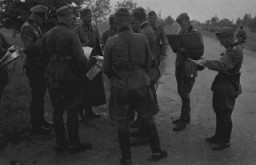
-
Third Reich: An Overview
ArticleThe Third Reich began with the Nazi rise to power in 1933 and ended with the German surrender in 1945. Learn more about Nazi Germany during World War II.
